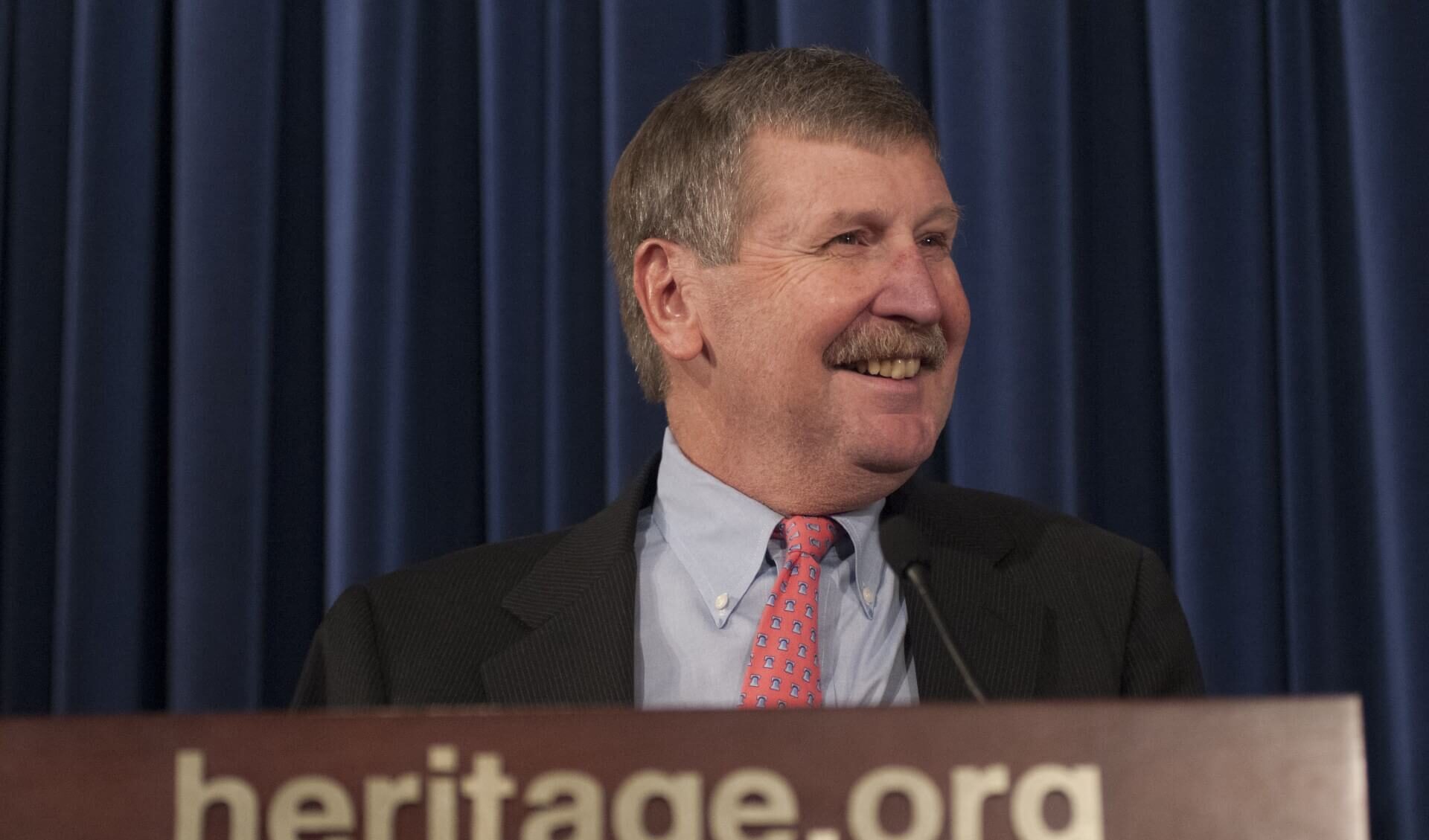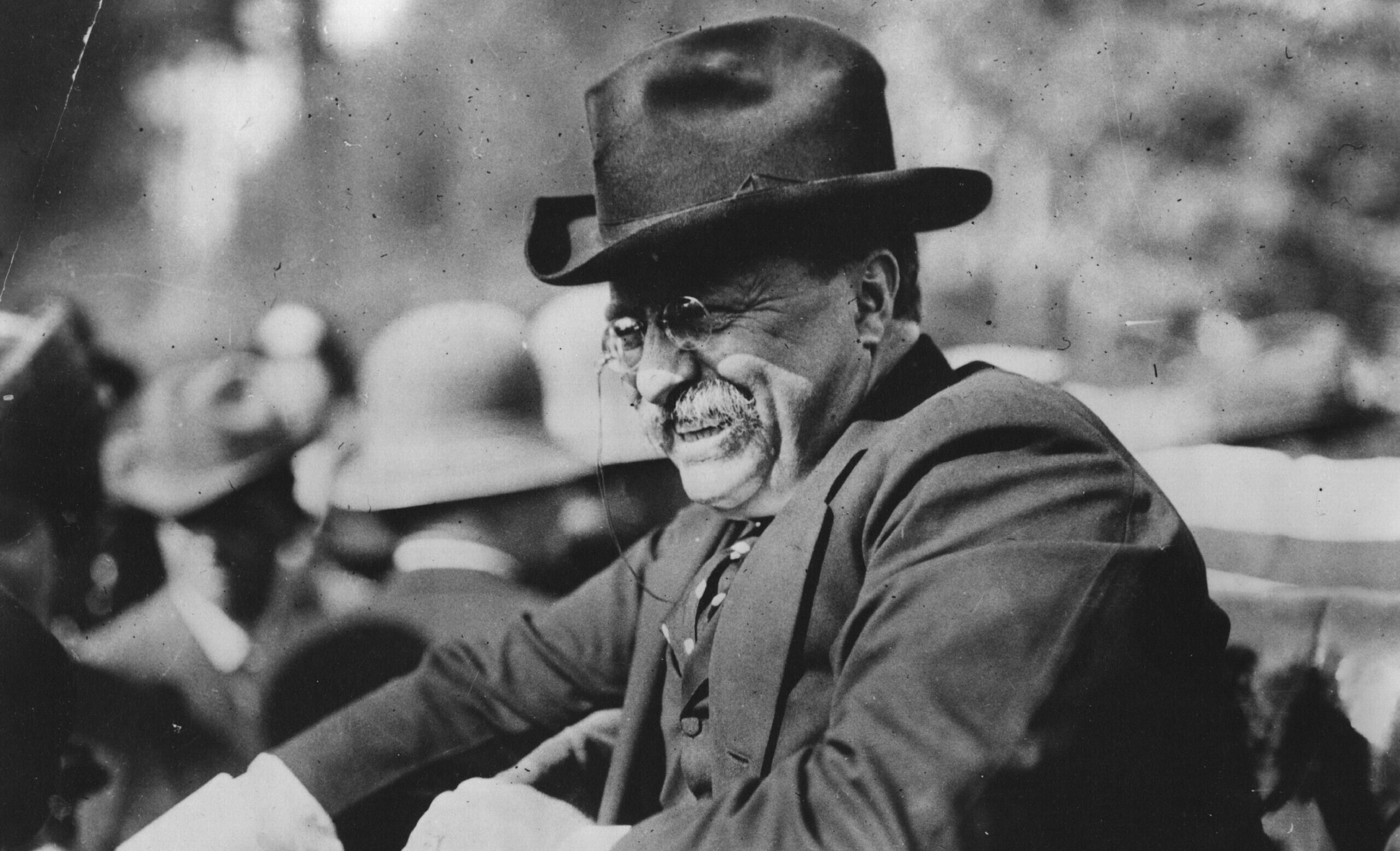Seldom has someone been more perfectly matched with his gifts than John (Baron) Von Kannon. For nearly four decades, Baron was the conservative movement’s premier fundraiser, raising more than $1 billion for the Heritage Foundation and other conservative institutions. But to describe him simply as a “fundraiser” is like saying that Ronald Reagan was just “a great communicator.”
John Von Kannon saw himself primarily as a matchmaker between donors and conservative institutions. His favorite saying was that “People of means have money. We have the means of accomplishing their dreams.” Ed Feulner, the longtime president of the Heritage Foundation, explained that when Von Kannon met donors he spent most of his time listening to them. He wanted to know “what they cared about and what their goals were.” He would then match them with a Heritage project or perhaps a conservative organization. Dozens of nonprofits benefited from his discerning matchmaking.
“If you want to be a truly successful fundraiser,” Von Kannon explained, “you must understand donors as people, what they feel, what interests them. You must learn why they give.” Never begin a conversation by asking for a donation, he warned. “Money does not lead the mission but follows the mission.”
Whenever possible he would leaven the conversation with humor. He always knew the latest joke making the rounds. He borrowed freely from his favorite president, Ronald Reagan, who told this to the Soviet leader Mikhail Gorbachev:
An American and a Russian are arguing about free speech. The American says, “In my country I can go to the White House, walk into the president’s office and pound on the desk and say, “I don’t like how you’re running things.” The Russian says, “I can do that too. I can go to the Kremlin, walk into the general secretary’s office, pound on the desk, and say, “Mr. Secretary, I don’t like how Reagan is running his country!”
John Arthur Von Kannon was born on March 9, 1949, in Terre Haute, Indiana, in the heart of Middle America. He was proud to be from a state that produced movement conservatives such as Pierre Goodrich, founder of the Liberty Fund; the Wabash College economist Benjamin Rogge; and Donald Lipsett, who started the Philadelphia Society. His fellow Hoosier Robert Russell, who worked with Von Kannon for more than thirty years, said that people from Indiana have “big hearts, work hard, have respect for others and a strong faith and are conservative to the core.”
John was a voracious reader from childhood, encouraged by his father, a middle-school teacher and principal in the Indiana public school system. His conservatism was reinforced by his association with Hoosier Boys State, a program in Indiana-style politics and government. His leadership skills were evident from the start—he was elected president of the Boys State session he attended.
While in high school, he was a volunteer worker in the presidential campaign of Barry Goldwater and was exposed to conservative works such as The Conscience of a Conservative by Goldwater and A Choice Not an Echo by Phyllis Schlafly. For the rest of his life, whether in the office or on the road, Von Kannon was never without a book of history, biography, or a historical novel. “Through biography,” he said, “you learn history because history is people.”
In the turbulent Sixties, John enrolled at Indiana University, where he continued his political activities, becoming a leader of the conservative Young Americans for Freedom. There was plenty for YAF to do. Indiana was the first public university to elect a member of the far-left Students for a Democratic Society (SDS) as its student body president. In 1972, when the conservative congressman John Ashbrook of Ohio challenged President Richard Nixon in the Republican primaries, Von Kannon and other young conservatives helped to collect signatures to get Ashbrook on the Indiana ballot.
It was at Indiana University that John formed a lifelong friendship with R. Emmett Tyrrell, the Menckenesque founder and editor-in-chief of the Alternative, the student magazine that became the celebrated American Spectator. John was taken with Tyrrell when he observed the young editor hawking subscriptions to his publication dressed in a toga and a Texaco fire helmet.
Nicknamed “Baron” because of his aristocratic-sounding name, Von Kannon became managing editor of the Alternative, enthusiastically joining in Tyrrell’s deft put-downs of liberal idiocies. When liberal students staged a sit-in calling for the creation of an African American studies department, Tyrrell and Von Kannon claimed control of the Rose Well House (a stone gazebo) and demanded a department of Irish studies.
In 1972, Tyrrell and Von Kannon decided to transform the Alternative into a national magazine, incorporating as a nonprofit 501(c)(3) organization. In need of funds to finance the change, Tyrrell called Baron into his office and said he was no longer managing editor but publisher and responsible for raising money.
“I don’t know anything about raising money,” John protested.
“You’re a likable guy,” Tyrrell responded. “Just go see people.”
John started knocking on doors in Bloomington, explaining earnestly to potential donors the costs associated with printing, renting an office, and paying salaries. As he recalled, he made twenty calls that first week and “went zero for twenty.” It didn’t take a genius to see he was delivering the wrong message.
The next week John described to prospects how the magazine was “fighting the radicals on campus” (who had recently set off a bomb in the college library) and “training young conservative writers.” His success rate jumped to about one in three. “I learned,” he said, “to talk about critical issues on campus . . . and what they thought about them. I learned to listen.” It was only at the end and not the start of a conversation that he asked for a contribution “to help meet the concerns they had expressed and that we shared.”
In those early days, not many people identified themselves as conservative. Most of the Bloomington gifts were small—twenty-five dollars, fifty dollars, and the occasional one hundred dollars. Baron had to cast a wider net to fulfill the dream of making the American Spectator a national publication. He called on M. Stanton Evans, the youthful editor of the Indianapolis Star, who led him to an insurance entrepreneur and generous supporter of conservative causes. Their “great” conversation produced a $1,000 check, Baron’s first.
Baron often used the Indianapolis office of ISI (then the Intercollegiate Society of Individualists) whose director suggested he write to Roger Milliken, a wealthy Southern textile manufacturer who had backed Barry Goldwater’s 1964 presidential bid. Baron described how the Spectator was making a difference on campuses and producing young writers inspired by Bill Buckley. Within a week, a Milliken check for $5,000 arrived. “This was fun!” Baron recalled.
Over the following years, John Von Kannon raised thousands of dollars for the American Spectator, always promoting the principles of the conservative movement, which are, as Tyrrell said, “the principles of the Founding Fathers.” His career as an eminent fundraiser was interrupted in 1977 when he was preparing for the tenth anniversary of the Spectator.
Suddenly feeling very ill, he was persuaded to see a doctor who, after several tests, informed Baron that he had leukemia and only a few days to live. Fr. James Higgins, who had recently helped Baron convert to Catholicism, took immediate action. Along with Tyrrell, he invaded the intensive care unit of the hospital where a deathly ill Von Kannon lay and administered the Catholic Church’s “last rites,” also known as the anointing of the sick. Confident of God’s mercy, Fr. Higgins and Tyrrell bid goodnight to astonished doctors and nurses and a serene Von Kannon.
Baron fought hard against the disease. With God’s help and good care, the cancer went into remission and remained there for decades. When a friend confessed amazement at his miraculous recovery, Baron replied: “I did not think I would die. I asked my Catholic friends to pray for me. I asked my Protestant friends to pray for me. And I hired a good Jewish doctor.” He later told Tyrrell that becoming a Catholic “was the best personal decision he had made.”
The best professional decision he made was to approach Heritage president Ed Feulner, who hired him in 1980 as a fundraiser. His desk was an old table on the third floor of a row house overlooking an alley. He had a part-time assistant and a half-time secretary. Just one year later, he was named vice president of development.
“Coming to Washington, D.C. [and Heritage] from a little magazine in Bloomington, Indiana,” he said, “was a heady experience.” He now slept in hotels instead of friends’ lumpy couches. He rented cars instead of “my ancient stick-shift Volvo.” “I started thinking big,” he admitted, “and began forgetting some of the early lessons.” He persuaded Phil Truluck, Heritage’s executive vice president, to travel to Florida and ask Jack Eckerd, a wealthy trustee, for a sizable contribution. Shaking his head in disbelief, Eckerd responded, “I’m not going to give you $1 million.”
A chastened Von Kannon noted the lessons learned from the Eckerd visit. One, don’t ask someone to make a gift that equals 25 percent of your budget. Two, don’t fall back on a short-sighted approach of “You have money; we want money; give us some.” Three, don’t pull a figure out of your hat, but suggest an amount that would seem reasonable to a donor. Four, research the donor before you ask for his support: “What does he like about us and what would he like us to do more of?”
Eckerd’s refusal drove home a fundamental truth about fundraising: “Always lead with the mission, and the money will follow.” Baron insisted that donors be treated as partners, not walking checkbooks or ATM cards.
He used humor everywhere to make a point, even in church. In the 1980s, when a Cold War was being fought between the forces of freedom and those of tyranny, a pastor would often invite the congregation to share a sign of peace. People would say to Baron, “Peace be with you,” to which he would reply, “Peace through strength”—President Reagan’s foreign policy motto. As he often said to new Heritage employees, “We take our job seriously, but we don’t take ourselves seriously.”
“How easily John walked in different worlds,” remembered Mike Franc, a former Heritage colleague who later led the Hoover Institution’s Washington office. Franc recalled the Capitol Hill Gang, a diverse group of residents that included liberal Democrats. The gang would go to baseball games, play poker, and drink beer, leaving partisan politics at the office. Some of Baron’s best friends lived on Capitol Hill. They may not have shared his political views, but they cherished his friendship.
Baron had the gift of making everyone, including donors, feel comfortable. “It was not calculated,” Franc said. “It was real.” He went to their weddings and their funerals. He treated all donors the same, whether they gave $10 or $10 million. And he would walk away from a gift if he thought it did not fit Heritage’s mission. Franc recalled a defense contractor who pushed Heritage hard to write a paper recommending a plane his company made. “We didn’t do it,” Franc said. “As John liked to say about Heritage, ‘We’re not for sale.’”
Looking for new challenges and determined to show he could be successful without Heritage, he left the foundation and settled in Sacramento, where he served as the vice president of the Pacific Legal Foundation. Looking for the right fit, he next moved to Chicago to form a partnership with fellow Indianan Robert Russell. For two years, they helped some fifty nonprofit organizations solve their fundraising problems. But in 1991, Baron decided that his true home was the Heritage Foundation, which welcomed him back. Under his leadership and over the next quarter of a century, Heritage fundraising reached new and previously unimagined heights. It is estimated that Von Kannon was responsible for raising $1 billion for the foundation.
In 2014, Baron got some bad news: cancer had returned. For nearly a year he went through rigorous treatment, which did not, however, remit the disease. He prayed for acceptance of God’s will. In his final days, as visitors sought to say the right thing, Baron constantly joked and asked colleagues whether they were following up with donors. He reminded a visitor of the importance of thanking a donor. He asked for the latest on legacy gifts and whether Heritage was on target to meet its budget.
The phone rang continuously as friends checked in. When he grew visibly tired, people would reluctantly leave. “It is incredible how he approached the end of his life,” remembered Carsten Walter, who had been hired by Von Kannon. “He prepared not only his family but all of us.” Toward the end, when Baron was too weak to hold a Bible, his son Jack would read from scripture, and they would discuss the meaning of a passage. When death came on September 5, 2015, his wife Cindy and their college-age children Rachel and Jack were there forming a circle of love.
In an essay titled “The Education of a Fundraiser,” published after his passing, John (Baron) Von Kannon explained what had inspired him throughout his life: “My passion is to promote conservative ideas, to return America to the vision of our Founders.”
Baron looked for those who shared his passion and welcomed them into the Heritage family and the conservative movement. Then he would ask, “Did you ever hear the one about the Catholic priest, the Protestant minister, and Jewish rabbi who walked into a bar?”
Excerpted from The Ten Laws of Fundraising: Inspired by the Life and Work of John “Baron” Von Kannon with the permission of The Heritage Foundation.














